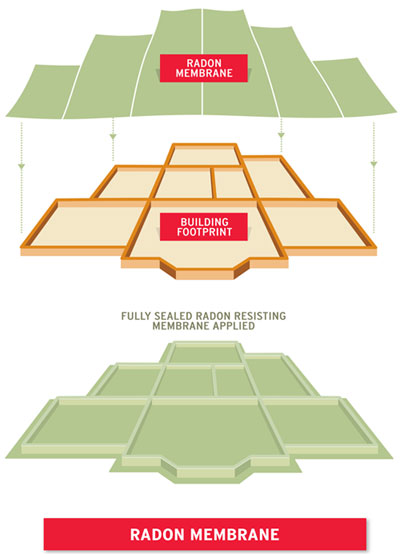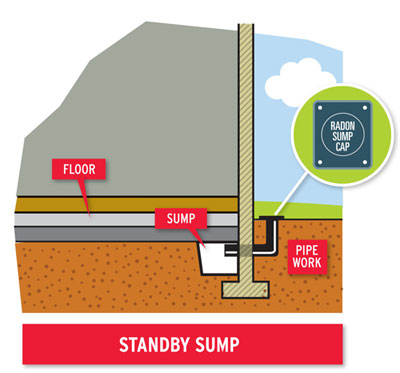Builders
Learn how radon affect construction activity and your responsibilities under the building regulations.
How radon enters a building
The Building Regulations require the installation of radon preventive measures to minimise the level of radon in new homes.
The Department of Housing, Planning and Local Government has updated the Technical Guidance Document - C of the Building Regulations which sets out the radon preventive measures required in new builds in High Radon Areas. Check out our map for use with Technical Guidance Document - C to see if your building will be located in a High Radon Area.
Radon can enter a building from the ground through small cracks in floors and through gaps around pipes or cables.

Buildings in some parts of the country are more likely to have a radon problem. These parts of the country are called High Radon Areas. Outside radon is diluted to very low levels.
If your home was built before May 2022, check our interactive map to see whether your building is in a High Radon Area.
The acceptable level, or reference level, for homes and schools in Ireland is 200 becquerel per cubic metre (Bq/m3). For workplaces the reference level is 300 Bq/m3.
Radon Prevention
For buildings built since 1st July 1998 in High Radon Areas the installation of a radon membrane is required.
There is no published national standard setting out the required specifications for radon membranes. However, the National Standards Authority of Ireland has issued technical certification for a number of radon membranes. The NSAI Agrément Certificates establish proof that the certified products are ‘proper materials’ suitable for their intended use under Irish site conditions, and in accordance with the Building Regulations.

The Building Regulations also require that all buildings built since 1st July 1998 are fitted with a standby radon sump. This is simple pipe work that extends from under the foundations into the outdoor air. If high radon levels are measured, the standby sump can be activated by adding a fan. It should be noted that a standby sump that has not been activated by adding a fan does not reduce radon levels in a building.

Correct installation of passive preventive measures in new buildings is the most cost effective way of protecting the population against radon. Research has shown that, on average, radon levels in houses built after 1998 in high radon areas are lower than in those built before 1998 by approximately 25%. However, the installation of a radon membrane cannot guarantee that radon in an individual building will be below the Reference Level and the quality of the installation is critical to the success of the membrane.
Training and CPD
For further information about training courses in preventive measures, please contact the EPA directly.
A two day training course on radon remediation measures is available. This course is a prerequisite to being listed as a registered radon remediation company on the EPA's website. The course is run on an on-demand basis. Please contact the EPA for further details.
Guidance information
Further information about radon:
Contact us
FreePhone: 1800 300 600
Email: radon@epa.ie